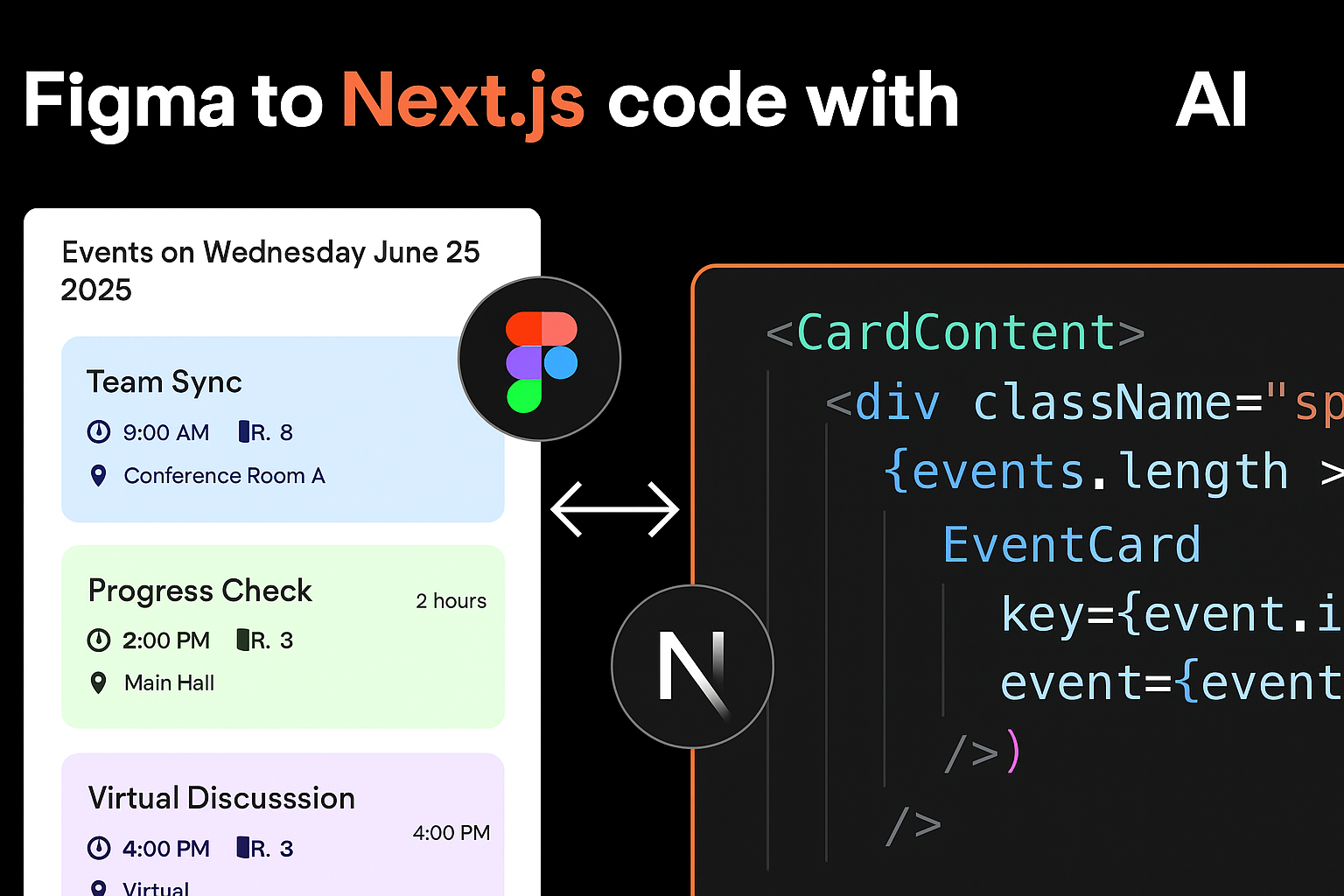Discover how AI-powered tools can transform your static Figma designs into production-ready Next.js components in minutes.
If you’re a developer or designer, you’re all too familiar with the friction between designing in Figma and building in Next.js. Bridging the gap manually is tedious and error-prone. Thankfully, AI tools like Builder’s Fusion and Locofy.ai are here to close that gap seamlessly by generating clean, responsive, and framework-aligned code automatically.
⚙️ What Fusion (by Builder.io) Brings to the Table
- AI-Powered Next.js Generation: Fusion integrates with Figma via plugin and can autonomously generate Next.js code that fits your architecture—whether using Pages or the new App Router.
- Design System Awareness: It respects your Figma design system, translating component variants, tokens, and styles into well-structured Next.js components.
- End-to-End Support: Fusion handles multi-screen flows, dynamic props, routing, and even real-time preview—all within your CI/CD and IDE setup.
🔨 How to Use Fusion in Your Workflow
- Install the Plugin: Add Builder’s Figma plugin.
- Import Frames: Use the plugin to pull your Figma frames into Fusion.
- Generate Next.js Code: Tell Fusion where and how your components should integrate.
- Customize and Preview: Adjust props, layout, and styling directly, with live updates and code synced back to your repo.
- Create a Pull Request: Fusion automates PRs, letting your team review before merging.
🚀 Alternative: Locofy.ai for Figma-to-Code Conversion
- Pixel-Perfect Export: Locofy integrates into Figma to generate high-quality Next.js code, complete with responsive components and interactive behavior.
- Live Design Preview: You can interact with your design as actual code in real time before exporting.
- Component Prop Support: Locofy detects reusable elements and converts variants into parametrized, modular components.
- GitHub Sync: It integrates with your repo, allowing two-way syncing and merging updates between design and code.
🏗 Integrating Generated Code into Your Next.js Project
- Asset Management: Ensure images and icons from Figma are correctly exported and referenced via
next/image. - Styling: Use your preferred styling approach—Tailwind, CSS Modules, styled-components—as Fusion or Locofy supports them.
- Interactivity: Add React features like
useState,useEffect, and event handlers for interactive UIs. - Routing & Data Fetching: Incorporate Next.js
getStaticProps,getServerSideProps, or API routes where needed.
✅ Benefits and Considerations
- Faster Prototypes: Figma projects can turn into working prototypes in minutes.
- Design Consistency: By mapping tokens and component variants automatically, visual fidelity remains high.
- Reduced Boilerplate: No more manually creating layout scaffolding or repetitive components.
- Need for Oversight: AI-generated code may require cleanup—optimizing file size, performance, or redundancy is still up to you.
- Compatibility: Works best when your Figma design aligns with your codebase’s existing structure and styles.
📌 Final Thoughts
Converting Figma designs to Next.js has never been this smooth. Tools like Fusion and Locofy.ai are revolutionizing frontend workflows by automating repetitive tasks, aligning design systems with production code, and enabling rapid iteration—all while integrating with familiar developer tools.
These AI-assisted platforms don’t replace developers; they augment productivity and free you up to focus on architecture, interactivity, and real-world integration.
At Web Expert Solution, we help teams harness modern frontend tools—whether it’s AI-powered code generation or advanced frameworks like Next.js. Subscribe for practical tutorials, tool comparisons, and insider tips to level up your development game.
